Top-10 North American Defensemen in the 2020 NHL Draft
Oct 4, 2020
This article originally appeared on AnaheimDucks.com on October 1, 2020.
By Kyle Shohara/AnaheimDucks.com
As we get closer to the 2020 NHL Draft on Oct. 6-7, AnaheimDucks.com is looking at some of the top-ranked skaters by position. We continue with the top-ranked European defensemen, in order of final draft rankings per the NHL's Central Scouting Bureau.
Related: Top-10 North American Wingers | Top-10 European Wingers | Top-10 North American Centers | Top-10 European Centers
Several references were used when describing each of these prospects, including The Athletic's Corey Pronman and Scott Wheeler, and TSN's Craig Button and Bob McKenzie.
The Ducks currently hold two picks in the first round (6th and 27th) and three in the top-36.
Visit our Draft Hub for the latest NHL Draft news, rankings and more
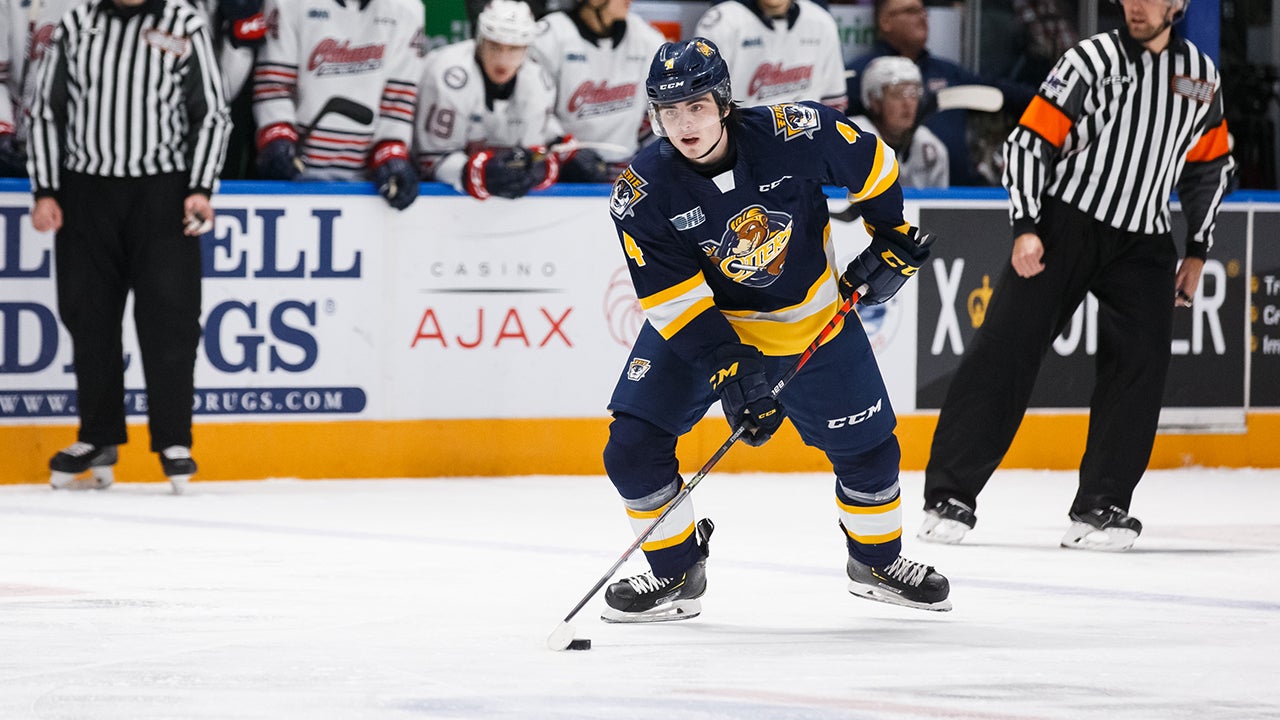
1. Jamie Drysdale
NHL.com Scouting Report: Exceptional skater with an excellent transition game that can drive the play and push the pace from the back end. A two-way defenseman with excellent offensive ability. He is hard to beat in his own zone - uses an excellent stick, intelligent positioning and angles to defend.
- Final Rank: 3
- Age: 18 (4/8/02)
- Height: 5-11
- Weight: 175
- Birthplace: Toronto, Ontario
- Shoots: Right
Drysdale checks all the boxes you want for a modern-day NHL defenseman. He's an elite skater - many say he's one of the best in the draft - with tremendous hockey IQ. He can kick start the breakout, lead the rush and simply blow past defenders with pro level speed. But it's his superb edgework that makes him even better. He can spin off checks, evade forecheckers, walk the blueline and keep tight gaps despite being on the "smaller" side by NHL standards. He's also a right-handed shot, which seems to be highly coveted these days.
He finished his second season in the OHL with 47 points (9g/38a) in 49 games with the Erie Otters, ranking 13th among league d-men in scoring and 10th in average points per game (0.96/GP). He was named an OHL First Team All-Star at the conclusion of the season and can become the third Otter in the last five years to be selected in the first round, joining Connor McDavid (No. 1) and Dylan Strome (No. 3).
He was noticeable on the international stage this past season, helping Team Canada to a gold medal at the 2020 World Junior Championship with three points (1g/2a) in seven games.
Drysdale is the third-ranked North American skater and highest ranked defenseman, only behind QMJHL Rimouski left wing Alexis Lafreniere and OHL Sudbury center Quinton Byfield. It seems like anything can happen after the consensus top-three picks are made, so there could be a chance Drysdale's available when the Ducks make their selection at six.
TSN's Bob McKenzie has him No. 4 on his final rankings. "Eight of 10 scouts ranked him in that position, giving him the nod as the consensus top blueliner available in this year's draft. Drysdale was No. 4 on TSN's mid-season list. It's worth noting, however, that the next-best defenseman, No. 8-ranked Jake Sanderson of the U.S. U-18 National Development Team Program, did have two of the 10 scouts rank him at No. 3, ahead of Drysdale. So Drysdale is the consensus top defenseman, but it's not unanimous. Drysdale is an elite skater, incredibly agile, with outstanding hockey sense and offensive instincts. At 5-foot-11, he's not a big pro-style blueliner, but he's shown to be a capable defender who uses his smarts, body positioning, gap control and stick deployment to his advantage."
"His biggest strength is his mind. His IQ. The hockey sense. It's simply outstanding. When you think about how he uses it, he has a mastery in all areas of the game and in all situations. It allows him to be as complete of an 18-year-old defenseman as I've seen. When we get to the scouting report, it's a five [out of five] on the hockey sense. But he makes the game look incredibly easy. When you consider how good his puck skills are, it doesn't matter if he's in the defensive zone, the neutral zone or the offensive zone. He just makes the right plays all the time. When you project him, he's a No. 1 complete right [shot] defenseman in the mold of Dallas Stars hall-of-famer Sergei Zubov." -- TSN's Craig Button
"Drysdale was one of the top defensemen in the OHL and accomplished the unusual feat of not only making Canada's U20 team as a 17-year-old, but also holding his own and showing he could skate with that team. He's one of the best skaters in the draft. He has very good speed and can lead a rush at the higher level. His speed isn't what defines his skating, though, it's his elite edge work. He's so good at evading pressure, and walking the blue line with his crossovers and spinning off checks. Even though he's not the biggest defenseman, Drysdale shuts down a lot of rushes because of how quickly he closes on his checks. Offensively he's very good, but not flashy. He's not going to go end to end through three defenders, but he's an excellent puck-mover. He sees the ice at a very high level, and is creative with his exits and blue line play. His elite skating and vision are what make him dangerous and will allow him to QB an NHL power play." -- The Athletic's Corey Pronman
"Drysdale is the best defenseman in the draft and will likely not be available at eighth overall as a result. I wouldn't fault a team for taking him as high as third (though the Senators won't), either. His lower ranking here has more to do with the impact I believe the forwards ahead of him could - and should - have at the NHL level than it does with any concerns I have about Drysdale's game. He's one of the more effortless skaters the draft has produced in recent memory, with top-tier four-way mobility that helps him close gaps, pivot away from pressure, weave through traffic, and play on his heels when he has to and create lanes for his passes or shots. His hands and heads-up vision also help him navigate in all three zones with the puck, run a power play and hit seams when they open up. And though he can occasionally lack power, both in his man-on-man defending and in his shot, he's stronger than he looks. Defensively, his game already has a lot of polish, too. He does a great job disrupting plays with his stick and making quick decisions to move the puck back up ice. He may not have the size or the powerful game needed to become a Norris Trophy-caliber defender but he's got other dynamic qualities that may help him become a No. 1 (if not a very good No. 2) regardless." -- The Athletic's Scott Wheeler
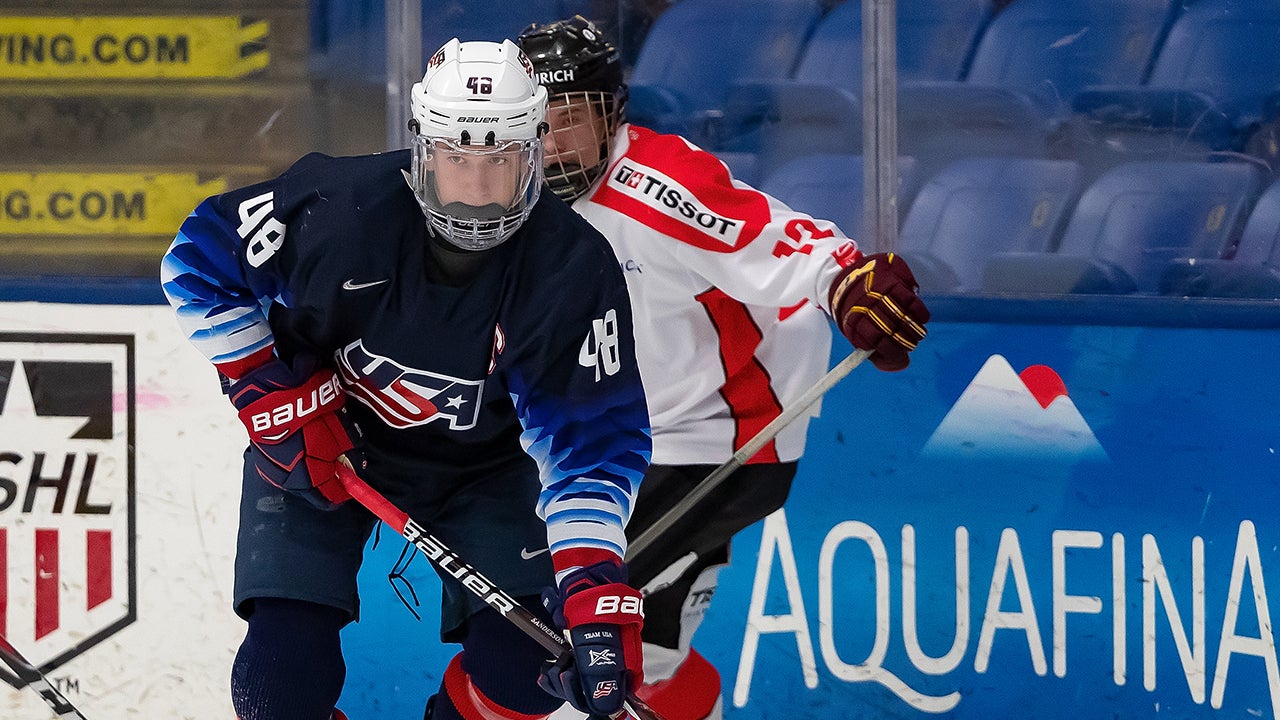
2. Jake Sanderson
NHL.com Scouting Report: Excellent skater who plays all parts of the game at a quick pace. Elite hockey sense allows him to be effective on the attack and while defending. Great battle game and compete level.
- Final Rank: 4
- Age: 18 (7/8/02)
- Height: 6-2
- Weight: 185
- Birthplace: Whitefish, Montana
- Shoots: Left
Right behind Drysdale in Central Scouting's final rankings is Sanderson, a big, mobile, left-shot defenseman from the U.S. National Team Development Program. Sanderson shot up the charts after slotting in at No. 11 in the midterm ranking, finishing his 2019-20 season strong by co-leading the under-18 Five Nations tournament in scoring back in February. He led all defensemen in the U18 NTDP with 29 points (7g/22a) in 47 games last season while serving as team captain. Sanderson also wore the 'C' with the U17 squad in 2018-19.
"The son of former NHL speedster forward Geoff Sanderson, who is the pride of Hay River in the Northwest Territories, young American Jake is a shooting star in the 2020 draft class. At almost 6-foot-2 and a 185-pound frame that will greatly fill out in the years to come, he demonstrated in the first half of the season that he has the physical tools, including elite skating ability, to be a big, mobile shutdown NHL defender. But in the second half of the season he exploded offensively, and so did the projections, even though his consensus ranking on the TSN list improved by only one slot from mid-season. As previously mentioned, two of TSN's 10 scouts have Sanderson as the top defenseman in the draft and ranked him third overall, behind only Lafreniere and Stutzle. He was No. 3 on the high side, No. 11 on the low side." -- TSN's Bob McKenzie
"An elite skating defenseman. Five out of five when you look at his ability to pivot, the agility, the quickness to gain leverage. It's so crucial to his success and, by extension, the way he can impact the game in every single crucial situation and in every zone. When you look at the scouting report, his competitiveness is excellent, but his defensive play stands out. He's a fierce defender. He takes you off the puck. It's almost stealth-like. With very good puck skills, he's able to get the puck moving in a forward direction and go on the attack. He's a No. 2-No. 3 pillar left defenseman in the mold of Winnipeg Jets defenseman Josh Morrissey." -- TSN's Craig Button
"Sanderson was leaned on as the top defenseman for the NTDP. He ended the season on a high note at the U18 Five Nations in February co-leading the tournament in scoring. He's a great skating defenseman in all directions with size that allows him to make a ton of stops. His gap control is excellent, and he killed so many rushes with how well he closed on opponents. He's also a physical player who shows no hesitancy to close on checks with his body. Sanderson's top speed is very good, not elite, but he can lead rushes well and isn't afraid to jump into the play. His edges are excellent, allowing him to spin off pressure, to pivot and walk the offensive blue line very well. He was the PP1 guy for USA, but the main question on him is his offensive upside. He has skill and can make a very good first pass, but I wouldn't call him a dynamic playmaker. His production may not wow you, but he had a strong NTDP campaign points-wise relative to other top defensemen at his age historically, especially since he didn't has a U18 World Championship to compete in and he's a very young 2002 birth date." -- The Athletic's Corey Pronman
"Some teams have Jake Sanderson ranked in their top five, according to multiple sources, so this ranking stands as a bit of an anomaly. [Wheeler has him ranked at No. 17.] One source argued that he was the best defensive defender in the draft. And there are things about Sanderson's game and season that can't be disputed. He was excellent in the second half, which is likely linked to his summer birthday and the added runway he had (and still has) to develop as a result. He's an excellent skater. His ability to generate power through his straight-line push is better than I thought it was at the start of the year. He's a mature, polished defender for his age, not only in the way he defends the rush but also off the cycle with the decisions he makes on reads and pressure. And he plays a hard-nosed style that teams covet. I would, however, dispute his offensive upside. Where some scouts feel he has the potential to become a first-pairing defenseman, I have some reservations. Will Sanderson be able to run a power play as he progresses up levels as he has with the NTDP? In college, yes. In the NHL? I'm not sure he's so dynamic that he's going to be a game-breaking offensive threat or a PP1 guy." -- The Athletic's Scott Wheeler
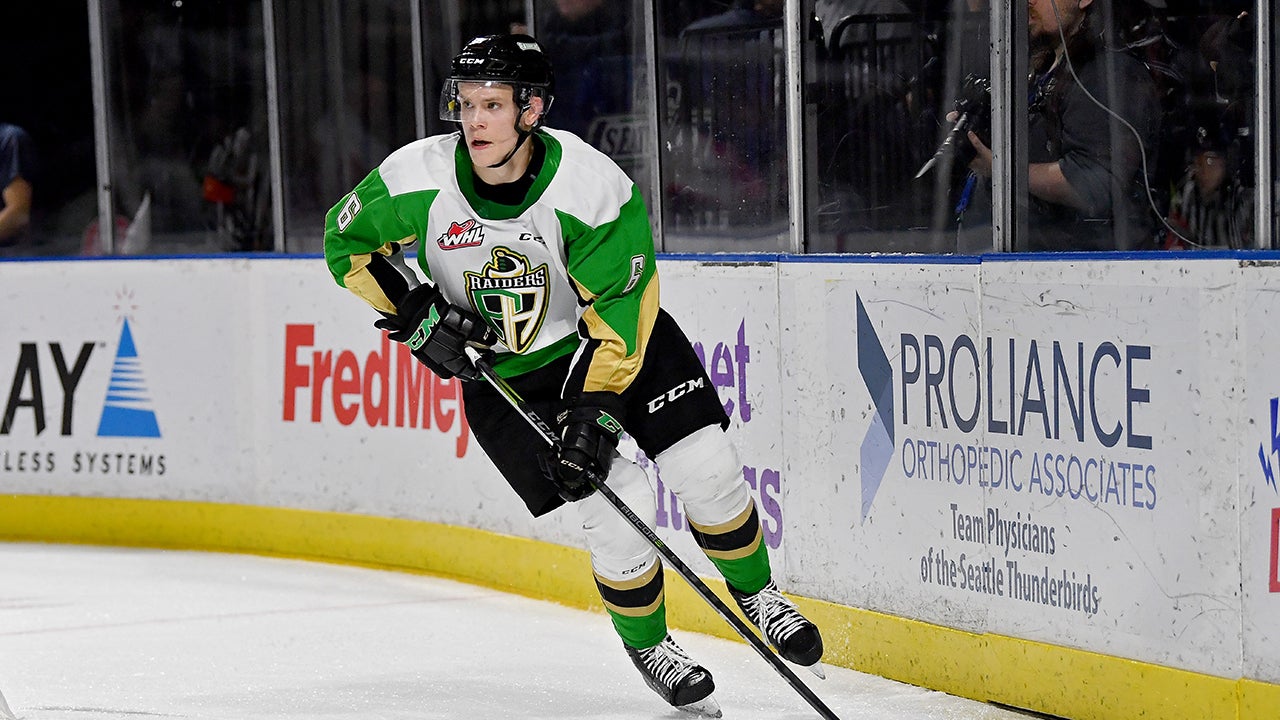
3. Kaiden Guhle
NHL.com Scouting Report: An excellent skater with quick acceleration who is mobile and elusive when defending. Can be very physical with big open ice hits. Likes to join the play for odd man rushes. The go-to guy on the blueline for his team. Possesses a solid one-time shot.
- Final Rank: 8
- Age: 18 (1/18/02)
- Height: 6-2
- Weight: 186
- Birthplace: Edmonton, Alberta
- Shoots: Left
Younger brother of Ducks defenseman Brendan Guhle, Kaiden enters the draft as the third-ranked North American defenseman and the highest ranked blueliner from the WHL. Guhle led Prince Albert defensemen and ranked sixth overall on his team with 40 points (11g/29a) in 64 games last season. He won a WHL championship with the Raiders in 2018-19 and appeared in eight games with the club during the 2017-18 campaign. Guhle represented Canada at the 2019 Hlinka Gretzky Cup where he finished the tournament with one assist/point in five appearances.
"Excellent skater with the balance, power and leverage to be forceful defensively and with the speed and quickness to move the puck up the ice. Physical, territorial and competitive in his approach." -- TSN's Craig Button
"Guhle was the No. 1 pick in his WHL Bantam Draft, and after a limited role in 2018-19, he emerged as a top defenseman in his age group this season. Guhle is appealing because of his physical attributes. He's 6-foot-2, he skates quite well and he knocks opponents off the puck with high frequency. His gap control is excellent, closing on checks with force and showing a preference for playing the body. The question on Guhle will be how much offense he has and whether he can move the puck at the NHL level even after his 40 point season. I think he can, but with the caveat that he's not an NHL power play type. He has enough skill and IQ to make a good pass, and he shows some creativity off the offensive blue line. He can create more with his feet than with his skill." -- The Athletic's Corey Pronman
"When I was doing the reporting for my story on Carter Savoie and Mike Benning, their trainer Barry Butt, who also works with the Guhle brothers and Blackhawks 2019 third overall pick Kirby Dach, went out of his way to highlight Kaiden Guhle's freakish athleticism in the gym. In a group of the world's top young players, he stands above the rest. If you've watched Guhle closely, this shouldn't surprise you. He's one of the smoothest-skating defensemen in the class and he pushes opposing players around along the wall (and occasionally the rush). Concerns about his skill level continue to keep him just outside my top 31 (he has a heavy shot but he's not a playmaker and his handling still needs a bit of work when he's working in small areas) but Guhle will be a first-rounder and I wouldn't fault a team for taking him in the early 20s. While I don't see power play upside, his defensive game is already pretty refined. Guhle's skating is going to be an asset at the NHL level too - he can probably stand to get even stronger without sacrificing it - and if he can build upon a decent but unspectacular foundation offensively, he could become a second-pairing guy." -- The Athletic's Scott Wheeler
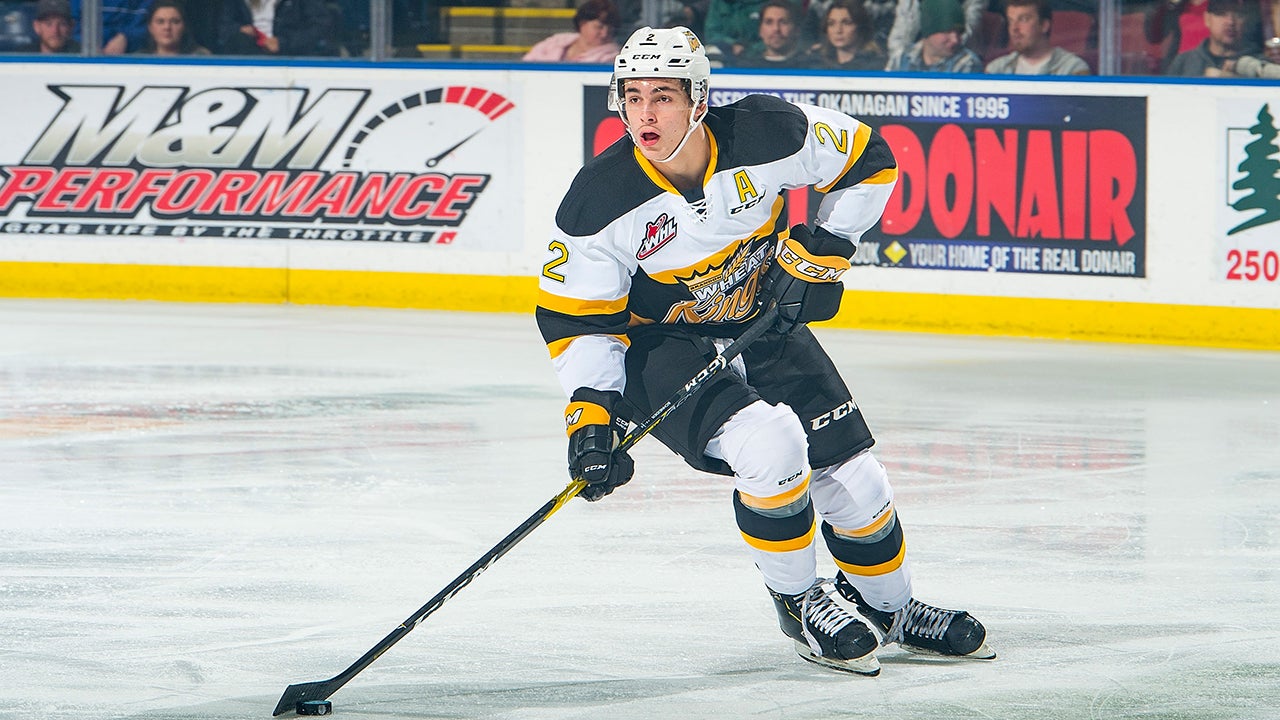
4. Braden Schneider
NHL.com Scouting Report: Displays a strong presence on the ice. Makes big hits in all three zones. Strong on his skates and hard to knock off the puck. Used in all situations. Likes to join the rush using deceptive speed. A complete package on the blueline who can control a game.
- Final Rank: 9
- Age: 19 (9/20/01)
- Height: 6-2
- Weight: 202
- Birthplace: Prince Albert, Saskatchewan
- Shoots: Right
Big and powerful, Schneider finished his third full season in the WHL with 42 points (7g/35a) in 60 games with the WHL's Brandon Wheat Kings. Experts say the 6-foot-2, 202-pound right-shot defenseman is strong in the d-zone (a must for any defenseman), using his size and mobility to take time and space away from his opponents. Though he isn't a bruiser, Schneider uses his frame to his advantage and isn't afraid to lay the body when needed.
He helped Team Canada to a gold medal at the 2018 Hlinka Gretzky Cup and suited up for his home country at the 2019 Under-18 World Championship.
"I love the way Braden plays. He's an exceptionally competitive territorial defenseman who gives no quarter and seeds nothing without a determined and competitive fight. When we look at the scouting report, there's nothing that really stands out outside of the competitiveness, but his game has progressed considerably in his three seasons in Brandon. Given his sense and desire to make a difference, his game may have another level. When I project him into the NHL, I see him as a No. 3/No. 4 competitive right defenseman much like New York Rangers defenseman Jacob Trouba." -- TSN's Craig Button
"Schneider may not overly excite you upon an initial look at his stats, and it's taken me a while to come around to him, but he's grown on me a lot over the past two seasons. I see a player with a lot of assets and few holes in his skill set. He's a 6-foot-2, right-handed defenseman who can skate well. He can rush pucks and close gaps well. Schneider moves the puck very well out of the defensive zone, showing great vision and patience on his outlets. He defends well due to his feet, but also doesn't shy away from playing the body and knocking players off pucks. He has some offensive blue line touch, but he's probably not going to be a power play guy in the NHL. He moves it at a clear NHL level, though, to where I think he could take a regular even strength shift and help his team's possession game without needing to be sheltered by his coach." -- The Athletic's Corey Pronman
"In his own zone, Schneider's one of the better defensive defensemen in this draft. He uses his length and strength well off the rush, too, but his biggest asset is his ability to take away time and space in the defensive zone, close out the wall, win puck battles and advance the play back up ice with a quick outlet. After three full seasons in the WHL, I would've liked to see a little more out of his puck game to rank him in the first round (where he will likely be picked), though. He has a hard point shot when he uses it but I would like to see him attack off the line more than he does. He's closer to turning pro than most and will be a penalty killer at the pro level, which some of these other defensemen will not be, but next year will be big for his development and I'll be watching closely to see if he can create at a higher, more consistent level. His skating is fine for his size and won't hold him back, but I wouldn't say it's a huge asset either (I'm a little lower on his mobility than most that way). I fear that a lot of his success stems from his physical maturity, which will become less of an asset against pros." -- The Athletic's Scott Wheeler
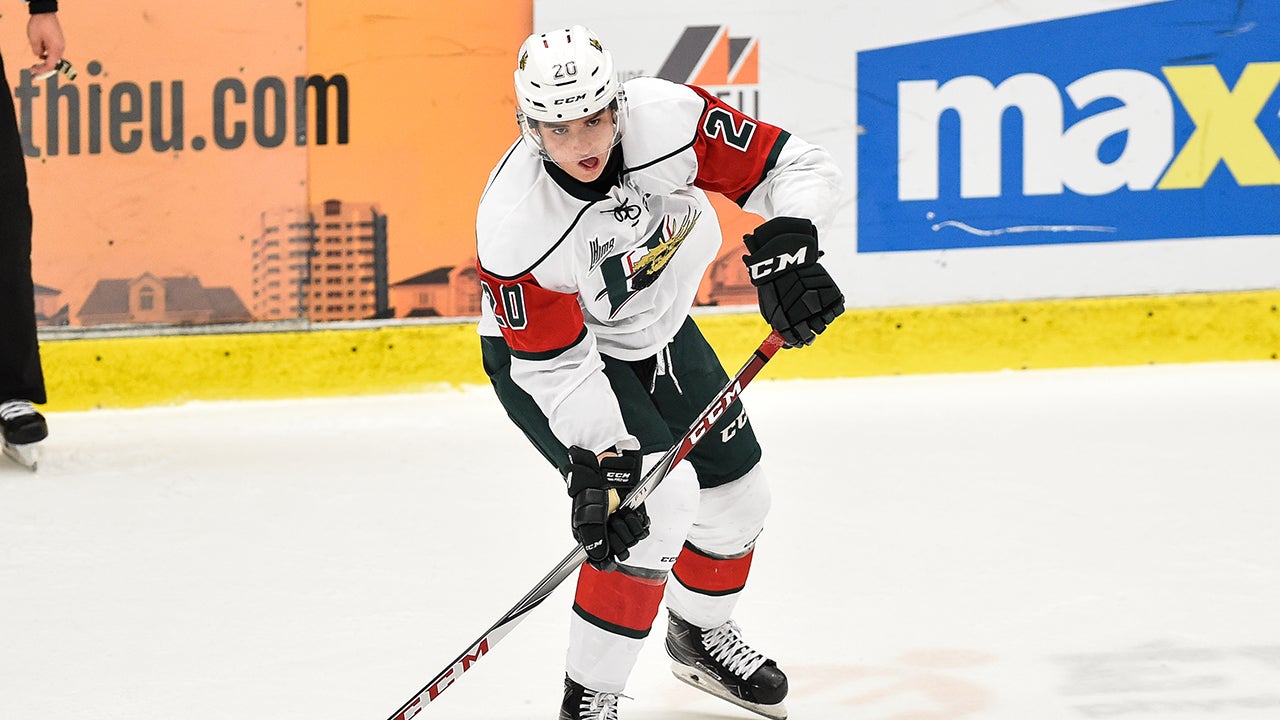
5. Justin Barron
NHL.com Scouting Report: Good size with excellent skating skills. Strong forward and backward strides. Solid puck retrievals. Moves the puck well while finding the right options under pressure. Great mobility with good gap control. Pivots and angles opponents well. Plays a physical game.
- Final Rank: 16
- Age: 18 (11/15/01)
- Height: 6-2
- Weight: 195
- Birthplace: Halifax, Nova Scotia
- Shoots: Right
Another 6-foot-2 defenseman on the list, Barron enters the draft as the highest-ranked blueliner from the Q. Injuries throughout the 2019-20 season limited him to only 34 games with the Halifax Mooseheads, but during that time he still posted 19 points (4g/15a). He was named to the QMJHL All-Rookie Team in 2017-18 after recording 21 points (2g/19a) in 51 games with Halifax. On the international stage, Barron was a member of the gold-medal winning Canada squad at the 2018 Hlinka Gretzky Cup.
"Cerebral defenseman who plays with a very calm and settled approach. He has good vision and sees the plays in all three zones and gets the puck to the right players in the right spots at the right times. Poised." -- TSN's Craig Button
"Barron is a player who's been hyped for a few years, playing well for Canada and Halifax. He had a tough season with a blood clot keeping him out for a while. He came back in late February, but it was still mostly a lost season with so-so production. On the ice, Barron is a fantastic skater who can lead a rush and close a gap very well, and he projects to be able to handle the NHL speed easily. When he hooks the net and is able to rush with speed, he's very difficult to stop with his size. The question on his game among scouts is whether he has enough skill and offensive IQ to move the puck at the higher levels. I think he does, but I understand the concerns and debated between putting a 55 or 60 on his hockey sense. He may not be a top puck-mover on your blue line, but rather someone who is solid defensively and makes enough plays to take even strength shifts." -- The Athletic's Corey Pronman
"It was hard to get a read on Barron this season. He played on a (rare) bad team in Halifax and battled injuries throughout. He has always been a top prospect and has long played with a maturity you don't often see in 16- and 17-year-olds. But he didn't really get the opportunity to progress like much of his peers, his game plateaued when he was in the lineup and I'm just a little hesitant to project him one way or the other these days. I'm just more confident in the players who are ahead of him here. He was excellent a year ago and I wouldn't fault a team for considering him late in the first round or early in the second. There's nothing about his game that will grab you but he does everything well. I'll be keeping a close eye on him next year. He's a Hockey Canada favorite, so if he gets off to a strong start, he'll probably be on Team Canada for the world juniors." -- The Athletic's Scott Wheeler
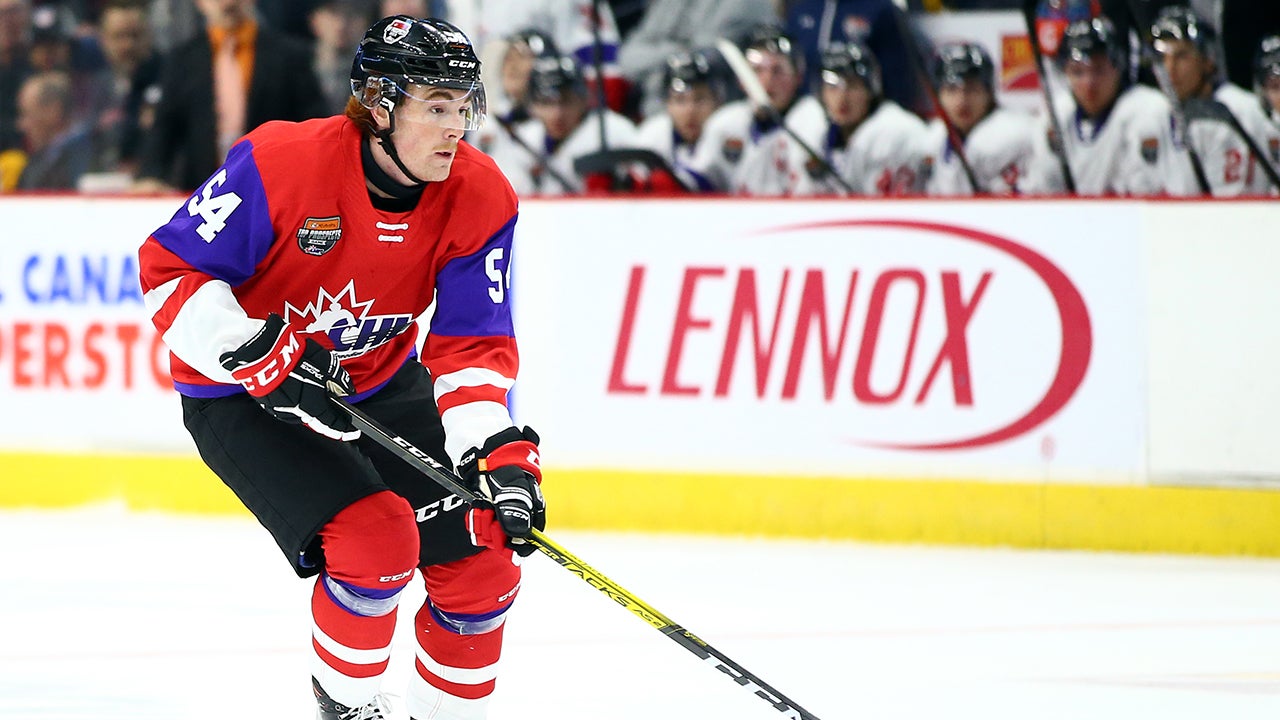
6. Jeremie Poirier
NHL.com Scouting Report: Highly skilled offensive defenseman with game-breaking ability. Looks to lead and join the rush with quick transitions. Creates offense for his team. Has a great shot and ability to find the right shooting lanes.
- Final Rank: 18
- Age: 18 (6/2/02)
- Height: 6-0
- Weight: 196
- Birthplace: Valleyfield, Quebec
- Shoots: Left
Another product of the QMJHL, Poirier had a huge season offensively during the 2019-20 campaign. He led QMJHL defensemen in goals (20) and ranked tied for second in points (53) in 64 games with Saint John. Poirier had three points in five appearances for Team Canada's silver medal run at the 2019 Hlinka Gretzky Cup and co-led tournament defensemen in scoring with six points (3g/3a) at the 2018 World Under-17 Hockey Challenge. Like any young player, there are certainly areas in his game that could use improvement, as noted below.
"Poirier had a fantastic season offensively, putting up 20 goals and 50 points, and was one of the leaders in the QMJHL in shots on goal. What makes Poirier exciting is his skill. He has extremely quick hands and ability to beat opponents easily with his skill. Poirier is a good skater, too, and plays with pace. He is often flying around the ice, stick handling through checks and is easy to spot when he's on the ice. Poirier has very good vision and can make high-end plays inside the zone and on outlets, but a criticism of him is his risk management. He can hurt himself with turnovers trying to do too much. I try not to ding guys too much for that. He has the puck a lot and if you are a skilled player that's going to happen if you play a lot. But it's something in the back of my mind, especially for a player who was on the ice for a lot of goals against this season. The biggest criticism of him is his defensive play. He has to work on improving his gaps, not getting caught too much trying to make cute plays in his own end and not giving up on plays. He was one of the most divisive prospects this season in discussions among scouts, with some saying he's a certain first-round pick and others saying they wouldn't use a second-round pick on him." -- The Athletic's Corey Pronman
"Poirier may be the most dynamic offensive defenseman in the draft. From the offensive zone blue line in, he can create in more ways than most forwards. He's got a better shot and more one-on-one skill. But he also takes more risks to create those chances, his game lacks defensive detail, his decision-making is often suspect and he can fade in and out of games without the puck. He's a boom-or-bust type. He is. But he also scored 20 goals as a late-birthday defender and that extra time could help iron out some of the D-zone kinks, which by all accounts he's committed to doing. I've also seen him defend well when he's surrounded by better players and the stakes are higher, whether that's with Team Canada or at the top prospects game. Some sources have suggested Poirier's going to slip into the second round as teams begin to draft safer NHL bets in the 20s but I'm not those no-fuss players teams love to take in the late-first round are a worthwhile investment with that asset. Trust your development team to work with a player who has obvious, enviable skill. Be bold. Be the team that identifies a market inefficiency, takes the risk, and has the success story to tell for it. If the alternatives are such safe bets, they wouldn't be available in the 20s or 30s to begin with." -- The Athletic's Scott Wheeler
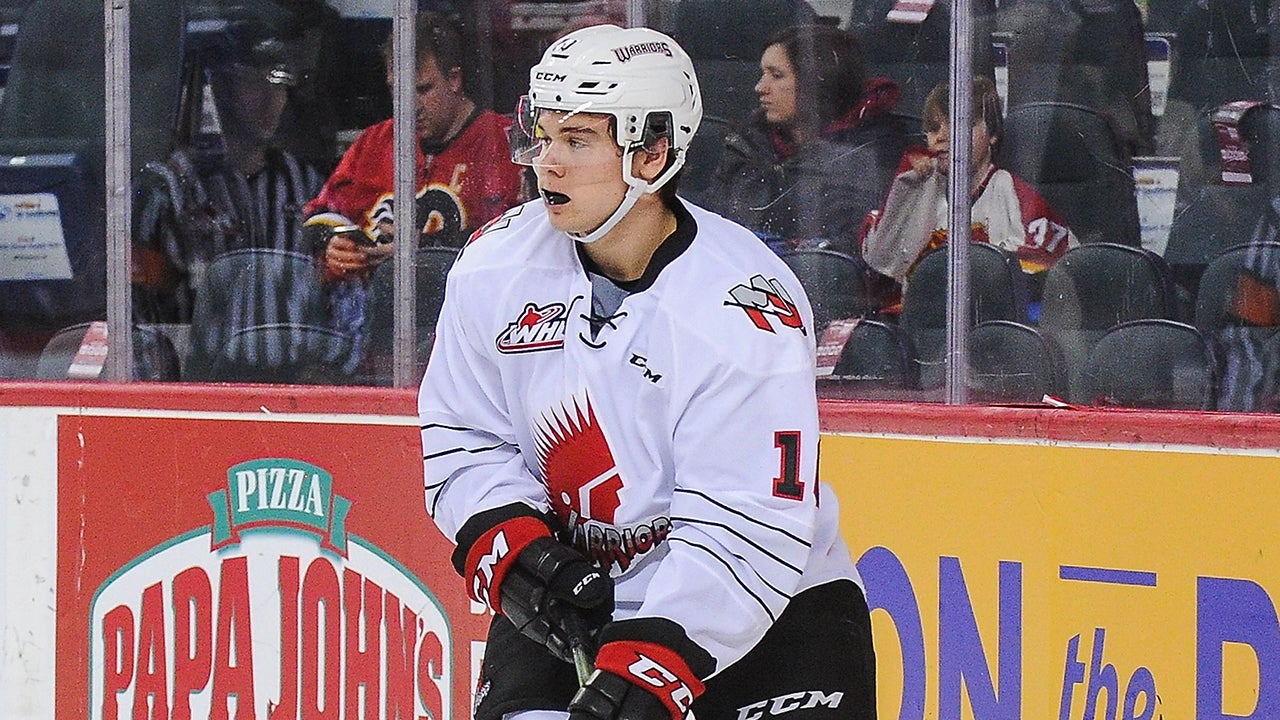
7. Daemon Hunt
NHL.com Scouting Report: A strong skater who uses different speeds to be effective. Defends well. Quick to create odd man rushes. Will step up in all areas when finishing checks. More of a playmaking defenseman than a finisher. Good intangibles.
- Final Rank: 25
- Age: 18 (5/15/02)
- Height: 6-0
- Weight: 198
- Birthplace: Brandon, Manitoba
- Shoots: Left
Hunt missed nearly half of the 2019-20 season after taking a skate blade to his arm, but finished with 15 assists/points in 28 games with the WHL's Moose Jaw Warriors. He's represented Canada at the 2019 Hlinka Gretzky Cup and 2019 IIHF U18 World Championship. Hunt's cousin is Matt Calvert, a 10-year NHL veteran who played for the Colorado Avalanche last season.
"Efficient, steady defenseman who doesn't excel in any particular area. Because of his sense and calm, plays with a measured and purposeful approach that doesn't extend beyond his capabilities." -- TSN's Craig Button
"Hunt had a tough season as he missed most of the campaign after a skate blade cut his arm. A precursory look at his stat line may not inspire confidence with zero goals and 15 points in 28 games. I think he has some offense but that isn't the strong point of his game. Hunt is a mobile and competitive defenseman. He isn't super fast, but his edges are very good and his ability to evade pressure and walk the line is impressive. He closes on checks very well due to his feet and physical play, landing a few thundering hits this past season. Hunt's offense is more from a good first pass as opposed to high skill plays, even if he was on Moose Jaw's PP1. I think he's creative enough as a puck-mover with his skating and defensive play that he could make it, but I can see why some would be hesitant." -- The Athletic's Corey Pronman
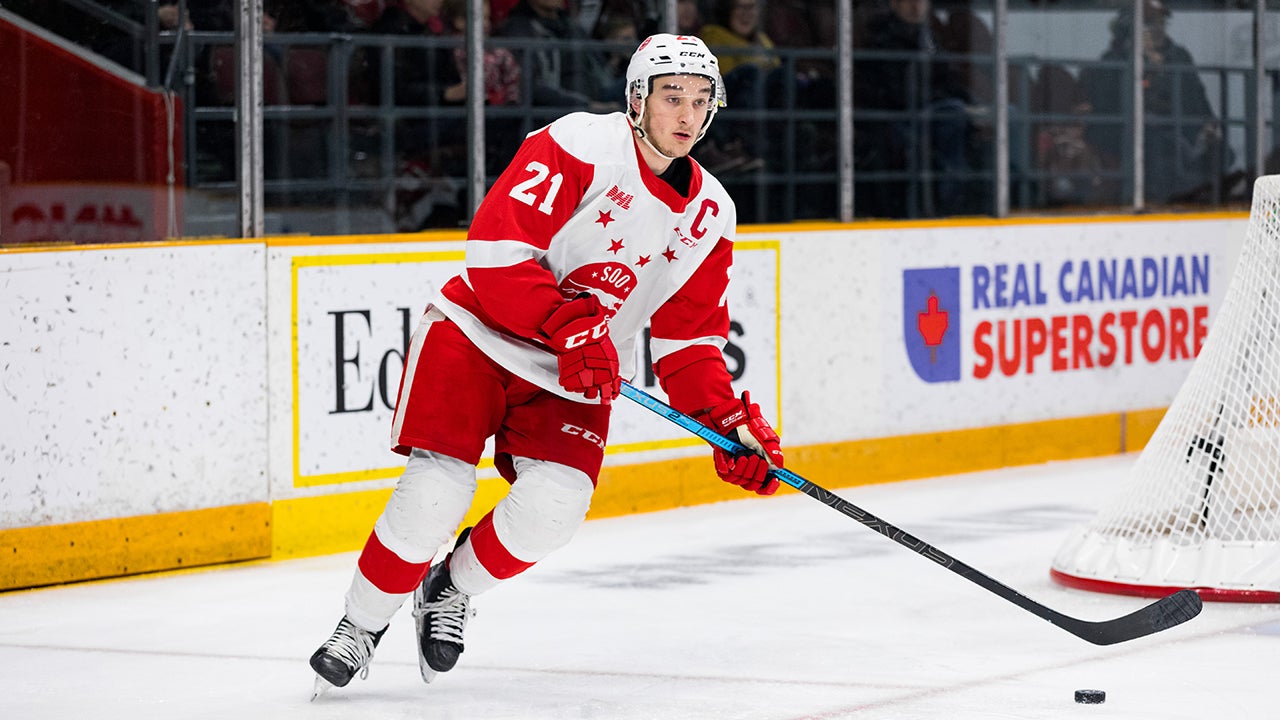
8. Ryan O'Rourke
NHL.com Scouting Report: Captain of the Soo Greyhounds. Strong skater with good mobility. Excellent compete level makes him hard to play against. Two-way defender with offensive upside and strong defending. Logs plenty of ice time in all situations.
- Final Rank: 27
- Age: 18 (5/16/02)
- Height: 6-0
- Weight: 178
- Birthplace: Pickering, Ontario
- Shoots: Left
Wearing the 'C' for the OHL's Soo Greyhounds, O'Rourke finished the 2019-20 season with 37 points (7g/30a) in 54 games while also rocking a team-best +16 rating. He also paced the team in average time on ice per game, often matched up against the opposition's best. Internationally, O'Rourke helped Team Canada earn silver at the 2019 Hlinka Gretzky Cup.
"Very steady player who is capable pf contributing in all situations, yet may not be a lead player in any of them. Good sense and feel, solid skills and is very effective and up to challenges." -- TSN's Craig Button
"O'Rourke played a ton of minutes for the Soo, and while his point totals may not jump off the page, he was a driving player for that team and lined up in all situations. O'Rourke is a very smart defenseman. His skill won't jump out to you on the ice, but he makes a lot of smart plays at both ends of the ice and has the occasional high-level offensive flash. He's a very good defender due to his IQ and his physicality. He kills a lot of rushes and projects to play tough defensive minutes as a pro. The main knock on him is just fine mobility. I don't think he's slow, and I have seen above-average flashes of speed from him over the years, but quickness isn't what makes him interesting from an NHL perspective." -- The Athletic's Corey Pronman
"I still worry about resetting this ranking. I agonized over where to rank O'Rourke. He's definitely in the same tier of D prospects as the handful of defenders who rank directly ahead of him here. He's got a real case as a late-first/early second-rounder. The strength of O'Rourke's game is his ability to defend players on the breakout and stretch the ice as a passer. I grew to appreciate the role physicality plays in his game defensively, too. He plays a hard game along the wall and if you can live with some of the penalties that come with it, it makes him an effective man-on-man option who can assert himself over the course of a game. He also became a big driver for the Greyhounds defensively, which can't be said of every CHL defenseman on my board. My ongoing concern with O'Rourke's game, if I have one, is that on a team with a trio of other defensemen with some offensive skill, he never managed to make himself the clear-cut go-to guy for offensive zone usage. To be comfortable in taking a player in the first round, I want to see them separate themselves from their teammates. We'll see." -- The Athletic's Scott Wheeler
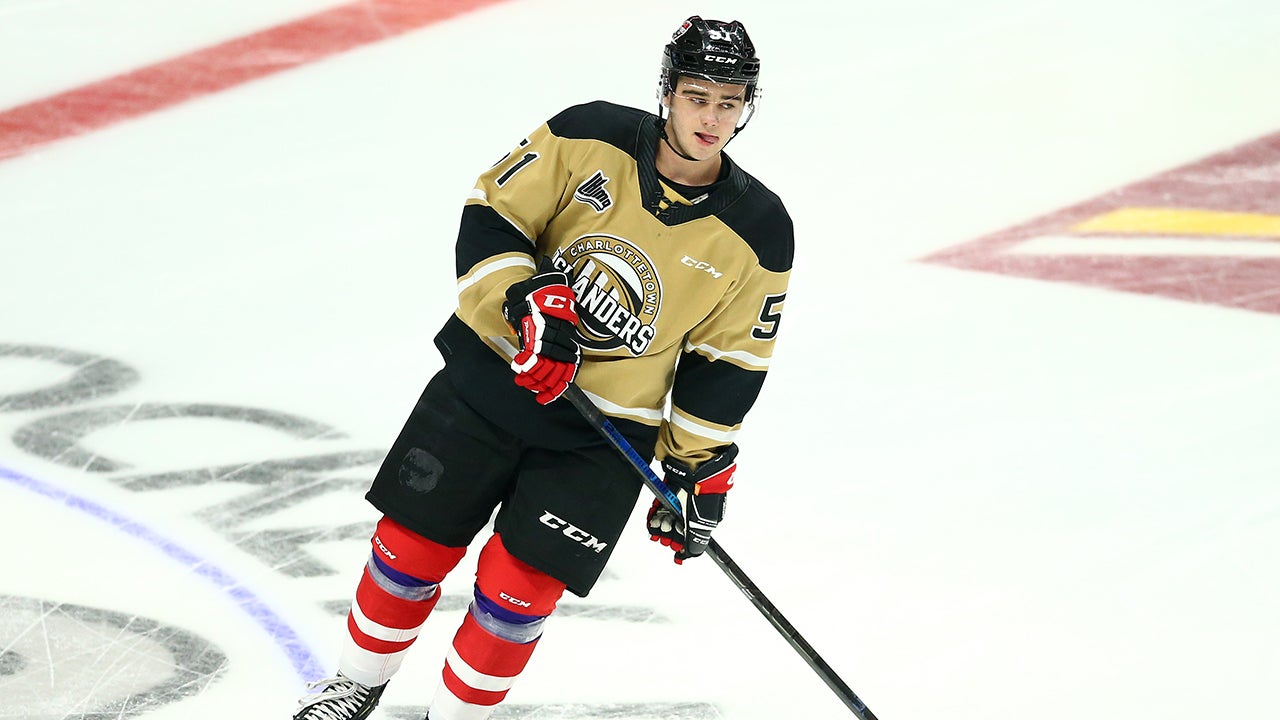
9. Lukas Cormier
NHL.com Scouting Report: Skilled, mobile defenseman that skates very well. Moves the puck quickly and with authority. Good vision. Processes the game well and poised with the puck. Smart with the puck while finding open options on zone exits. Defends very well. Takes time and space away and is quick to transition the puck.
- Final Rank: 32
- Age: 18 (3/27/02)
- Height: 5-10
- Weight: 180
- Birthplace: Sainte-Marie-de-Kent, New Brunswick
- Shoots: Left
Cormier paced the QMJHL's Charlottetown Islanders d-men and ranked fifth on the team with 36 points (6g/30a) in 44 games during the 2019-20 campaign. Despite being on the smaller side, Cormier isn't afraid of engaging physically, and was often used in tough minutes and on the penalty kill. He was named to the QMJHL All-Rookie Team in 2018-19 after leading all first-year defensemen in goals (15) and ranking second in points (36). Cormier was a member of the silver medal Team Canada squad at the 2019 Hlinka Gretzky.
"A defenseman who is incredibly comfortable playing in the offensive zone and around the net. Very good offensive instincts and he plays with great confidence." -- TSN's Craig Button
"Cormier has been a productive minute eater for Charlottetown for the past two seasons. Despite his numbers, including elite shot generation numbers, Cormier isn't a player I would characterize as flashy offensively. He certainly has some offense in him, but his game is more about his feet and brain than skill. He's a very good skater who can transport pucks up the ice. His feet allow him to break up a lot of rushes and cause turnovers up the ice. Cormier makes a lot of creative exits and plays inside the offensive zone due to how well he sees the ice. Even though he's not the biggest defender, in the Q he showed he can play tough minutes and kill penalties. Some scouts question whether he can be that type of player in the NHL at his size." -- The Athletic's Corey Pronman
"Cormier kicked off his QMJHL preseason with a four-assist game (all primary!). He was drafted into the QMJHL as a top prospect (fourth overall in 2018), he has played like that top prospect ever since, and yet I'm weirdly confident that he's going to be available well into the second round because he's perceived as small. If he were two inches taller, there's no question he's a first-round pick. Cormier's an excellent handler in transition and across the offensive zone blue line, where he rotates and pivots his way into lanes. He doesn't shy away from playing a physical style, despite being on the smaller side. He was a go-to option for the Islanders as a rookie, which earned him a spot on the QMJHL's all-rookie team. And he followed that up with consistency to his game as a sophomore that many of the other top D in this class lack. He's also a standout defender in his own zone, as well as off the rush and has shown he can drive results on a mediocre team at both ends. After missing six weeks with a lower-body injury that sidelined him from the middle of October until early December, Cormier came back and looked like one of the best defensemen in the QMJHL the rest of the way. I wasn't surprised when he was invited to Team Canada's virtual national development camp this summer (though one source told me he was)." -- The Athletic's Scott Wheeler
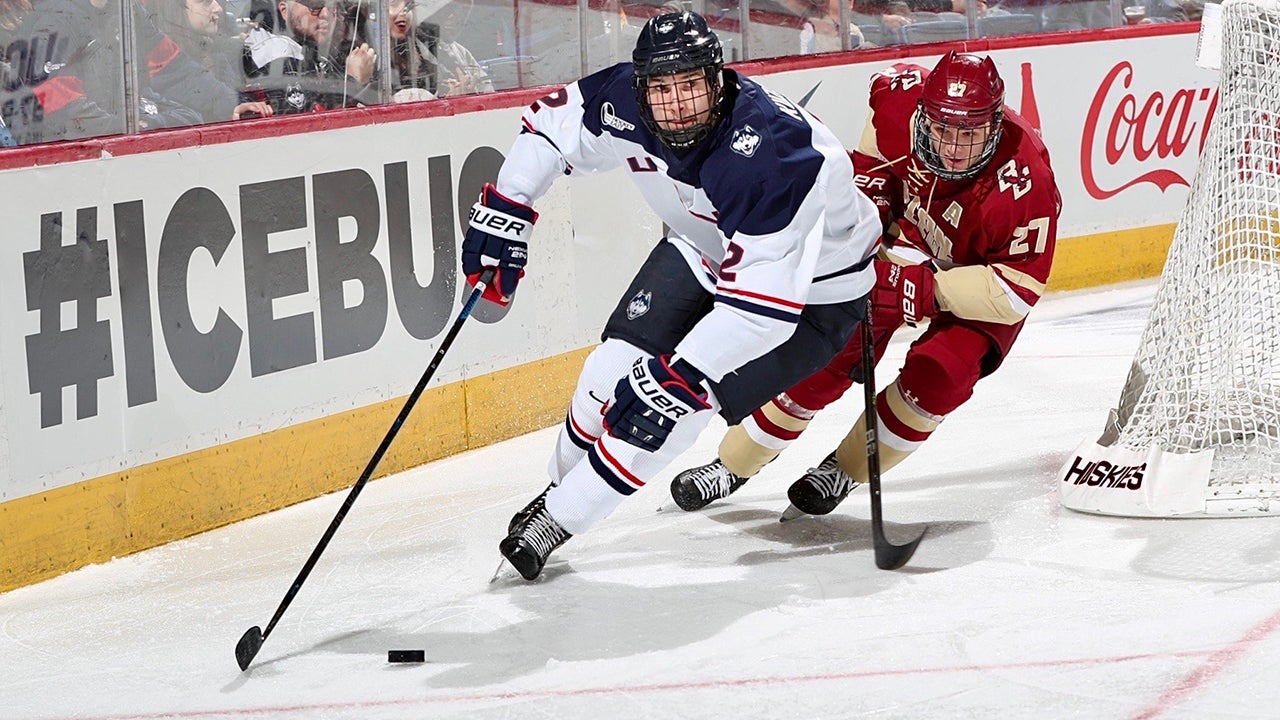
10. Yan Kuznetsov
NHL.com Scouting Report: Skilled, mobile defenseman that skates very well. Moves the puck quickly and with authority. Good vision. Processes the game well and poised with the puck. Smart with the puck while finding open options on zone exits. Defends very well. Takes time and space away and is quick to transition the puck.
- Final Rank: 36
- Age: 18 (3/9/02)
- Height: 6-4
- Weight: 209
- Birthplace: Murmansk, Russia
- Shoots: Left
Kuznetsov was the youngest player in NCAA Division 1 hockey last season, finishing the 2019-20 campaign with 11 points (2g/9a) in 34 games at UConn as a 17-year-old. Prior to his collegiate debut, Kuznetsov skated for the USHL's championship winning Sioux Falls Stampede during 2018-19. On the international stage, he helped Russia win gold at the 2018 World Under-17 Hockey Challenge where he was named a tournament all-star.
"Smart and understands how to play in all areas of the game. Uses size to gain advantages and is competitive with a presence. Moves puck very well and is poised. Solid player who's not flashy." -- TSN's Craig Button
"Kuznetsov stepped right into college hockey as a 17-year-old, getting a regular shift all season at a very young age. His physical tools intrigue as a 6-foot-4 defenseman who can skate with pros. His ability to skate pucks up the ice and close on checks will translate to the next level. He will be able to defend versus size and speed, the main question will be his offensive upside. On the one hand, you could argue he never produces much offense. On the other, you could argue he's always been on winning teams such as the USHL champion last season, the U17 worlds and World Jr. A champions, or that he was playing college hockey at an age way before most do. I've seen Kuznetsov look OK on the power play, and occasionally make creative passes out of his own end, but I don't mistake him for a scorer. I think there's enough offensive touch in his game to be an NHL player, but I know scouts who disagree." -- The Athletic's Corey Pronman